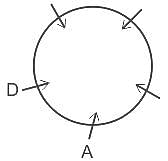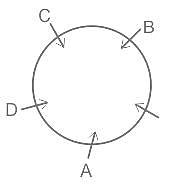NVS PGT Chemistry Mock Test - 4 - NVS TGT/PGT MCQ
30 Questions MCQ Test NVS PGT Mock Test Series 2025 - NVS PGT Chemistry Mock Test - 4
Who is popularly known as the father of Evolutionary Biology?
Which one of the following is not a function of roots for the plant ?
| 1 Crore+ students have signed up on EduRev. Have you? Download the App |
The First Cotton Textile Mill was established in India at
Five friends, A, B, C, D and E, are sitting around a circular table facing the centre. D is sitting to the immediate left of A. C is sitting to the immediate right of B. B is not sitting adjacent to A. Who is sitting second to the right of D?
Web search engines works with the help of two programs. Which are they?
Which of these converts a high level programming language to machine code?
The academic performance of students can be improved if parents are encouraged to
While making a lesson plan, Mrs Sharma should always decide upon:
a. The needs of learners
b. Evaluation process
c. Personal interaction with learners
Which of the following teaching aids is/are most effective in teaching primary level students?
If 40 ml of 0.2 M KOH is added to 160 ml of 0.1 M HCOOH [Ka = 2 × 10-4]. The pOH of the resulting solution is
In the following hydrolysis reactio, the major final product is
The reaction of cyanamide, NH2CN (s) was carried out in a bomb calorimeter, and ΔU was found to be - 742.7 kJ mol-1 at 298 K. Thus, ΔrH° at 298 K for
In which of the following complexes the nickel metal is in highest oxidation state.
The number of P – O bonds and lone pairs of electron present in P4O6 molecule respectively
Mean bond enthalpy of different bonds are given
Out of the given pairs, which compound is more stable than the other?
An organic compound X (C7H16O) on treatm ent with concentrated HCI solution forms immediate turbidity even in the absence of ZnCl2. Also, X is resolvable into enantiomers. The correct statement concerning X is
Which of the following in most soluble in water ?
Which of the following amine will form stable diazonium salt at 273-283 K ?
Sec – Butylamine is the common name of what compound?
Provide the structure of the major organic product which results in the following reaction.
Which step of enzyme catalysis mechanism is shown in figure?

Choose the pedagogical approach proposed in experimental learning under NEP-2020?
|
30 tests
|

























